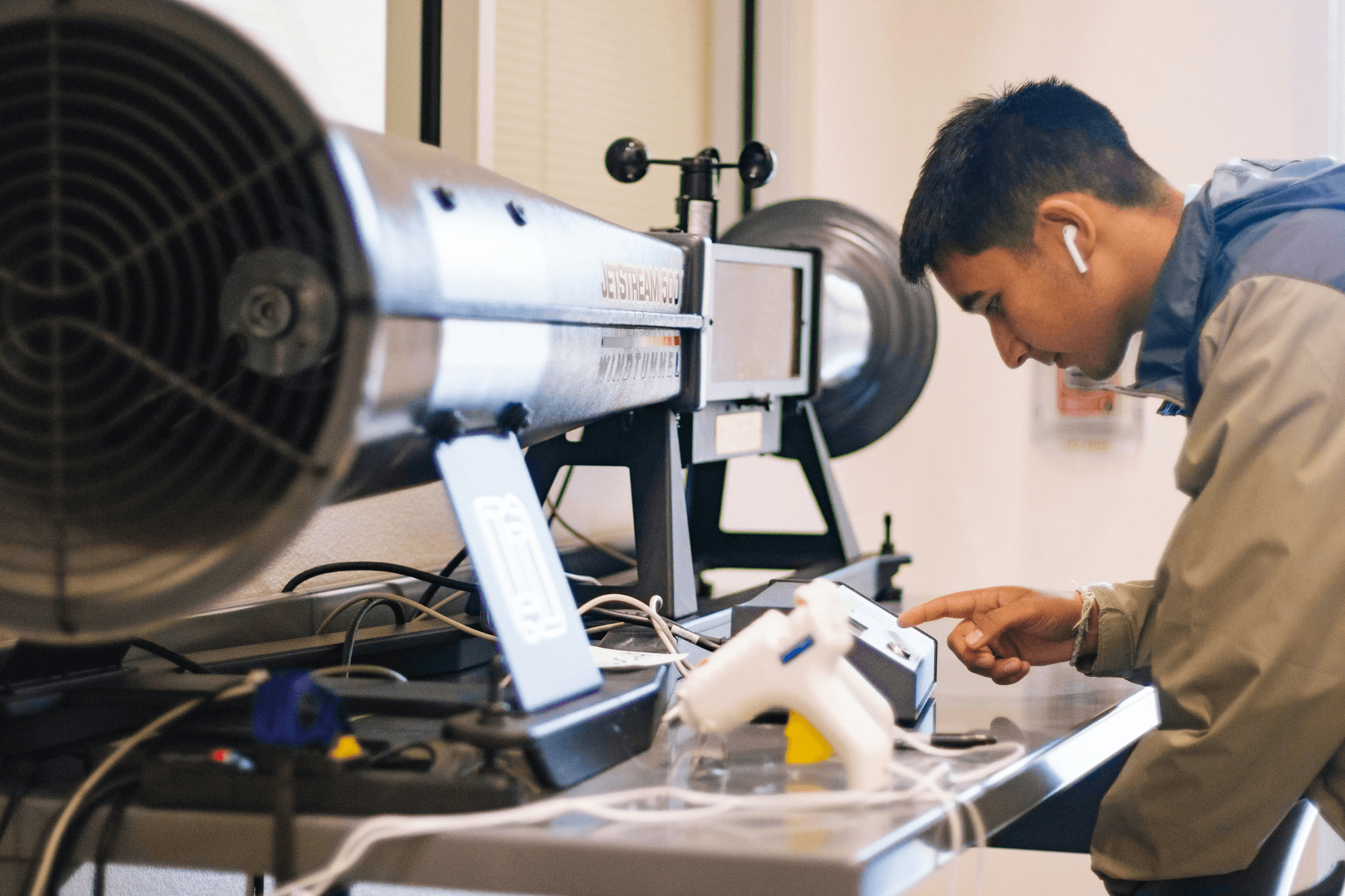Introduction
In the world of manufacturing and engineering, the Factory Acceptance Test (FAT) serves as a critical checkpoint before equipment is shipped to its final destination. This process not only verifies that systems meet specified requirements but also helps to ensure that they function correctly in real-world conditions. However, the success of a FAT hinges significantly on proper Pre-Test Preparation, which lays the groundwork for a smooth testing process.
Understanding the Factory Acceptance Test
At its core, a Factory Acceptance Test is designed to validate that equipment or systems are built according to contractual specifications and are ready for deployment. The objectives of FAT include confirming functionality, identifying potential issues early on, and ensuring compliance with industry standards. By understanding these facets, stakeholders can appreciate how FAT contributes to overall project success and customer satisfaction.
Importance of Pre-Test Preparation
Pre-Test Preparation is often overlooked but is indispensable for effective Factory Acceptance Testing. It involves gathering necessary documentation, coordinating with various teams, and ensuring that all resources are in place before testing commences. A well-prepared environment not only accelerates the testing process but also minimizes disruptions during Formal Test Execution.
Navigating Test Plan Design
Crafting an effective Test Plan Design is crucial for guiding the FAT process from start to finish. This plan should outline objectives, methodologies, timelines, and roles—essentially serving as a roadmap for all involved parties. A thoughtful approach to Test Plan Design can significantly enhance problem rectification efforts by clearly defining what constitutes success or failure during testing.
What is a Factory Acceptance Test?

The Factory Acceptance Test (FAT) is a critical quality assurance procedure that assesses the functionality and performance of equipment before it leaves the manufacturing facility. This test serves as a final check to ensure that all specifications and requirements are met, thus mitigating the risk of issues during installation or operation. By conducting a FAT, stakeholders can confirm that the product aligns with their expectations and contractual obligations.
Definition and Objectives
At its core, the Factory Acceptance Test is designed to validate that a system or component operates correctly according to predefined criteria. The primary objectives include verifying compliance with technical specifications, ensuring operational reliability, and confirming integration with existing systems. By establishing clear objectives during Pre-Test Preparation, teams can focus on what truly matters in their test plan design.
Benefits of Conducting FAT
Conducting a Factory Acceptance Test offers numerous benefits that extend beyond mere compliance checks. For starters, it significantly reduces the likelihood of costly post-installation issues by identifying problems early in the process—before any formal test execution begins. Additionally, engaging stakeholders during this phase fosters collaboration and transparency, ultimately enhancing trust between manufacturers and clients.
Role in Quality Assurance
In the realm of quality assurance, the Factory Acceptance Test plays an indispensable role by providing an opportunity for systematic evaluation before final delivery. It acts as a safeguard against defects or malfunctions that could lead to operational disruptions down the line. Moreover, through effective problem rectification strategies identified during FATs, organizations can continuously improve their processes and products based on documented findings.
Pre-Test Preparation Essentials

Pre-Test Preparation is a crucial phase in the Factory Acceptance Test (FAT) process, laying the groundwork for successful outcomes. It involves a series of methodical steps that ensure everything is in place before formal test execution begins. A well-structured preparation phase not only enhances efficiency but also minimizes potential issues that could arise during testing.
Key Steps in Preparation
The first step in effective Pre-Test Preparation is to establish clear objectives for the Factory Acceptance Test. This includes defining what success looks like and determining the specific criteria that will be used to evaluate performance during testing. Once objectives are set, assembling a comprehensive checklist of equipment, materials, and resources required for testing ensures nothing is overlooked when it's time for formal test execution.
Next, it’s essential to conduct a thorough review of all relevant documentation associated with the project and the equipment being tested. This includes specifications, design documents, and any previous test results that could provide insights into potential challenges or areas requiring special attention. By proactively addressing these aspects during preparation, stakeholders can streamline the FAT process and enhance overall quality assurance.
Finally, scheduling mock tests can serve as an excellent preparatory tool before engaging in formal test execution. These practice runs allow teams to identify weaknesses in their approach or unexpected issues with equipment ahead of time. In doing so, they can refine their strategies for problem rectification should any complications arise during the actual FAT.
Document Review and Approval
Document review plays a pivotal role in Pre-Test Preparation by ensuring all necessary paperwork aligns with expectations prior to executing the Factory Acceptance Test. This involves scrutinizing technical documents such as user manuals, assembly instructions, and compliance certifications to confirm they meet industry standards and project specifications. An approved document trail not only facilitates smoother communication among stakeholders but also serves as a reference point throughout formal test execution.
Moreover, obtaining approvals from relevant parties—such as engineers, project managers, or quality assurance personnel—is critical to validating that all aspects of preparation are satisfactory before proceeding with testing activities. This collaborative effort fosters transparency and accountability among team members while establishing mutual trust regarding expectations and deliverables during FAT.
In addition to securing approvals on technical documents, it's vital to ensure that all safety protocols are reviewed thoroughly before initiating formal test execution. Compliance with safety regulations protects personnel involved in testing while safeguarding equipment integrity throughout the process—a win-win situation!
Involvement of Stakeholders
Engaging stakeholders early on during Pre-Test Preparation significantly enhances the effectiveness of Factory Acceptance Tests by bringing diverse perspectives into play. Key players—such as engineers, project managers, clients, and quality assurance professionals—should be involved from day one to ensure alignment on objectives and expectations throughout every stage of testing. Their input can help identify potential risks or considerations that may have been overlooked initially.
Additionally, fostering open lines of communication among stakeholders encourages collaboration when crafting an effective Test Plan Design tailored specifically for each unique scenario encountered during FATs. Regular meetings or updates can facilitate ongoing dialogue about progress made toward preparations while allowing team members to address concerns promptly before they escalate into larger problems later on.
Finally—and perhaps most importantly—stakeholder involvement cultivates a sense of ownership over both processes leading up to formal test execution as well as outcomes achieved thereafter through problem rectification efforts if needed later on post-testing stages! By working together cohesively toward shared goals within this framework helps reinforce commitment towards achieving high-quality standards expected from successful Factory Acceptance Tests.
Crafting an Effective Test Plan
Creating a robust test plan is akin to laying the foundation for a skyscraper; without it, everything else risks collapsing. In the realm of Factory Acceptance Tests (FAT), a well-structured test plan design is not just helpful—it’s essential. This section dives into the critical elements that make up an effective test plan, ensuring that pre-test preparation is thorough and that formal test execution goes off without a hitch.
Elements of a Comprehensive Test Plan
A comprehensive test plan for Factory Acceptance Testing should include several key elements to ensure clarity and direction. First, it should outline the scope of testing, detailing what will be tested and what won't—think of it as setting boundaries for your testing playground. Next, objectives must be clearly defined; these objectives guide every action during the FAT and help measure success post-execution.
Additionally, your plan should specify resources required for testing, including personnel roles and responsibilities during the FAT process. By clearly delineating who does what, you minimize confusion during formal test execution—nobody wants to discover they’re responsible for something they weren’t aware of! Finally, establish timelines for each phase of testing; this keeps everyone on track and ensures timely problem rectification when issues arise.
Risk Assessment in Test Planning
Risk assessment is one of those things that we often overlook until it’s too late—like forgetting to check your parachute before jumping out of a plane! In the context of Factory Acceptance Testing, identifying potential risks early in your test plan design can save you from major headaches down the line. Conducting a thorough risk assessment allows you to anticipate challenges that could derail your testing efforts or compromise product quality.
Once risks are identified, categorize them based on their likelihood and potential impact; this helps prioritize which risks need immediate attention versus those that can be monitored over time. Developing mitigation strategies for high-priority risks ensures you're prepared if issues arise during formal test execution or even afterward when addressing problem rectification. Remember: forewarned is forearmed!
Importance of Test Scenarios
Test scenarios are like treasure maps, they guide you through uncharted territory while ensuring you don’t miss any hidden gems along the way! Incorporating detailed test scenarios into your FAT not only clarifies what needs to be tested but also helps streamline pre-test preparation significantly. Each scenario should represent real-world conditions under which the product will operate once deployed.
Moreover, having well-defined scenarios enhances communication among stakeholders involved in both planning and executing tests; everyone knows exactly what’s being tested and why it matters! During formal test execution, these scenarios serve as benchmarks against which results can be measured—making problem rectification much easier when discrepancies arise between expected outcomes and actual performance metrics.
Formal Test Execution Steps

Executing a Factory Acceptance Test (FAT) is not just about flipping switches and checking boxes; it requires a structured approach that ensures every aspect of the test is meticulously planned and executed. This phase is where all the Pre-Test Preparation pays off, as the groundwork laid in earlier stages comes to fruition. A well-designed test plan guides the team through each step, ensuring that objectives are met and quality standards are upheld.
Structured Approach to Testing
A structured approach to testing during the Factory Acceptance Test is paramount for success. It begins with following the test plan design, which outlines specific procedures, timelines, and expected outcomes. By adhering to this structure, teams can systematically evaluate equipment performance against predetermined criteria, minimizing errors and maximizing efficiency.
Incorporating checklists can help maintain focus during testing sessions. These checklists serve as a roadmap for testers to follow, ensuring that no critical steps are overlooked. Ultimately, this structured methodology not only enhances clarity but also reinforces accountability among team members.
Roles and Responsibilities During FAT
Clarifying roles and responsibilities during the Factory Acceptance Test is essential for smooth execution. Each member of the testing team should understand their specific duties—whether they are conducting tests, documenting results or addressing issues as they arise. Clear delineation of responsibilities fosters collaboration and ensures that everyone is aligned with the overall objectives of the FAT.
Stakeholders from various departments must be involved throughout this process to provide insights based on their expertise. For instance, engineers may focus on technical specifications while quality assurance personnel ensure compliance with industry standards. This collective effort strengthens problem rectification strategies by bringing diverse perspectives into play.
Monitoring and Reporting Test Results
Monitoring test results during a Factory Acceptance Test is crucial for identifying performance metrics against expectations outlined in the test plan design. Real-time data collection allows teams to assess whether systems meet quality assurance criteria or if adjustments are necessary before final approval. Continuous monitoring also enables immediate feedback loops that facilitate quick problem rectification when issues arise.
Once testing concludes, compiling comprehensive reports detailing findings becomes essential for future reference and decision-making processes. These reports should highlight successes as well as areas needing improvement based on observed outcomes during testing phases. By effectively communicating these results with stakeholders, organizations can bolster confidence in their products while laying groundwork for future enhancements in FAT protocols.
Problem Rectification After Tests
Once the Factory Acceptance Test (FAT) is complete, the focus shifts to problem rectification. This stage is critical as it determines how effectively issues can be addressed, ensuring that the product meets quality standards before it reaches the customer. Identifying and resolving problems promptly not only enhances product integrity but also reinforces stakeholder confidence in the testing process.
Identifying Issues During FAT
Identifying issues during the FAT is akin to finding pearls in an oyster; it requires a keen eye and thorough examination. During formal test execution, various types of discrepancies may arise, ranging from minor glitches to major operational failures. The key is to document these issues meticulously as they occur, allowing for a comprehensive understanding of what went wrong and where improvements are needed.
Strategies for Effective Problem Resolution
Once issues are identified, the next step involves implementing effective problem resolution strategies that can turn setbacks into learning opportunities. One approach could involve assembling a cross-functional team that includes members from engineering, quality assurance, and production who can collaborate on troubleshooting efforts. Additionally, employing root cause analysis techniques ensures that solutions address underlying problems rather than just symptoms, this proactive stance is essential for enhancing future Factory Acceptance Tests.
Documentation of Findings and Improvements
Documentation plays a pivotal role in problem rectification after tests; it serves as both a record of what transpired during the FAT and a guide for future improvements. Each issue should be logged with detailed descriptions of findings along with corrective actions taken—this not only aids in accountability but also helps refine pre-test preparation for subsequent tests. Moreover, compiling these insights into formal reports allows stakeholders to understand how each test contributes to overall product quality enhancement while setting benchmarks for future Factory Acceptance Tests.
Conclusion

In wrapping up our exploration of the Factory Acceptance Test (FAT), it’s clear that this process is pivotal for ensuring product quality and reliability before equipment leaves the factory. The key principles of FAT—thorough Pre-Test Preparation, meticulous Test Plan Design, and diligent Formal Test Execution—serve as cornerstones for successful outcomes. Each phase contributes to a comprehensive understanding of how well the system meets its specifications and operational requirements.
Summarizing Key FAT Principles
The Factory Acceptance Test is not just a box to check; it’s an essential part of the manufacturing process that ensures products function as intended. Effective Pre-Test Preparation lays the groundwork for success by identifying potential issues ahead of time and aligning stakeholder expectations. Furthermore, a well-structured Test Plan Design provides clarity on testing objectives, methodologies, and acceptance criteria, which are crucial for effective Formal Test Execution.
Enhancing Product Quality through FAT
By conducting a thorough Factory Acceptance Test, organizations can significantly enhance product quality and reliability. The rigorous evaluation during FAT allows teams to identify discrepancies early on, leading to timely Problem Rectification before products reach customers or end-users. This proactive approach not only boosts customer satisfaction but also reduces costs associated with post-delivery fixes or recalls.
Future Trends in Factory Acceptance Testing
Looking ahead, we can expect advancements in technology to reshape the landscape of Factory Acceptance Testing significantly. Increased automation and digital tools will streamline both Pre-Test Preparation and Formal Test Execution processes while improving accuracy in data collection during tests. Additionally, incorporating artificial intelligence into FAT could revolutionize risk assessment during Test Plan Design, allowing for more agile responses to potential problems.
